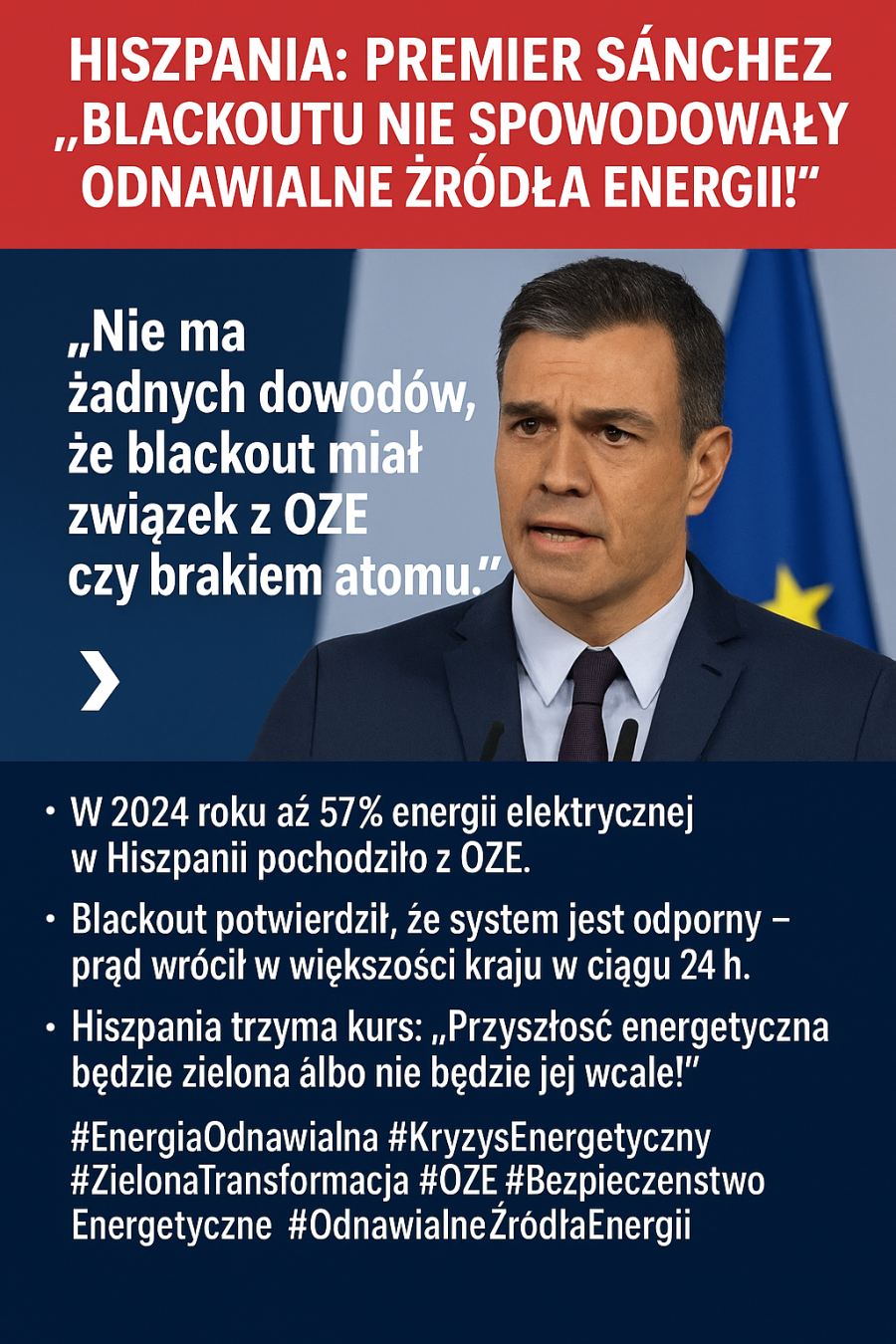On April 28, 2025, at precisely 12:33 PM, the Iberian Peninsula was rocked by one of the most significant power outages in modern Spanish history.
Within seconds, a series of anomalies triggered a domino effect across the region’s electrical grid, leaving millions across Spain and Portugal without power, halting business activity, freezing rail networks, and paralyzing transportation infrastructure.
Despite the severity of the incident, Spanish Prime Minister Pedro Sánchez swiftly addressed the nation with transparency and clarity. He made one thing unequivocally clear: the blackout was not caused by Spain’s renewable energy transition. He argued, the incident highlighted just how essential that transition is to ensuring the country's long-term energy security and economic stability.
What actually happened on April 28?
According to Sánchez, the disruption originated in southern Spain. The national grid initially responded by activating so-called "load-shedding relays" - automated safety mechanisms designed to reduce energy consumption in a controlled manner. However, cascading instabilities quickly spread, engulfing the entire Iberian Peninsula in a full-scale blackout.
A critical clarification: Renewables were not to blame
Sánchez firmly dismissed claims that renewables or the lack of nuclear energy were responsible in his address. "There is no empirical evidence whatsoever that this incident was caused by an overreliance on renewables or the absence of nuclear power in our energy mix,” he said.
Data supports this. On the blackout day, the share of renewables in Spain’s energy mix was lower than on many other days. And while nuclear plants supplied about 3,000 MW of power before the incident, they shut down entirely during the outage and did not contribute to grid restoration efforts, only restarting 15 hours later.
It was not nuclear energy, but Spain’s flexible and renewable sources - like wind and solar, combined with battery storage and grid flexibility - that enabled the system to recover stability.
The numbers behind Spain’s energy shift
Since 2018, Spain has rapidly expanded its renewable energy capacity. In 2024 alone:
- 57% of the country’s electricity came from renewable sources.
- Dependency on imported fossil fuels dropped by 6 percentage points.
- Greenhouse gas emissions were cut by 60% compared to 2018 levels.
- Overall, renewable generation increased by 78%.
Crucially, electricity prices have fallen. While Spain once had among the highest energy costs in Europe (as recently as 2018), it now boasts some of the lowest, thanks to strategic investments, smart fiscal policy, and infrastructure modernization.
Building a more resilient grid
The government is already acting on the lessons from the April blackout. An investigation is underway, analyzing 756 million data points collected across 4,200 facilities in just 20 minutes (from 12:15 to 12:35 PM on April 28). An independent report is also being prepared in Brussels, and Spain’s national technical commission is examining any potential security gaps.
Planned investments include:
- Expanding storage and transmission infrastructure.
- Introducing legal frameworks to support advanced power electronics that stabilize renewable inputs.
- Improving integration with wider European grids, particularly via France.
Economic impact: A temporary setback
According to data from Redsys, the blackout caused a temporary economic hit—an estimated €415 million dip in consumption on April 28. However, more than 75% of that was recouped within the next two days as demand rebounded.
Thanks to robust backup systems, hospitals, schools, and essential public services continued operating with minimal disruption. Sánchez praised the coordinated response from citizens and public institutions, which helped limit the broader economic fallout.
A model for responsible development
Spain’s energy transition is more than a technological shift—it's a blueprint for sustainable development. It:
- Reduces emissions and fossil fuel dependency.
- Promotes regional growth in historically underdeveloped areas like Extremadura and Castilla-La Mancha.
- Drives economic expansion—Spain accounted for 40% of the eurozone’s GDP growth in 2024.
“We are not turning back”
Prime Minister Sánchez concluded his address with a resolute message:
“We will not retreat even a millimeter from the energy plan we began in 2018. Renewable energy is not just our future - it is our best and only path forward.”
Rather than casting doubt on Spain’s green ambitions, the April 28 blackout reinforced the importance of accelerating the transition. It showed that renewables, when integrated smartly, can form the backbone of a modern, resilient energy system.
As Kuba Gogolewski of the RTON Foundation noted, “Spain is now setting an example other nations can follow. Spain’s energy mix is far more renewable-heavy than Poland’s, and the country is boldly testing the technologies and systems needed to make a green-powered grid a reality,” he said. “Poland and its national grid operator have a unique opportunity to benefit from international collaboration and cross-border electricity trading. It’s a chance to achieve the EU’s 2030 goal of 15% interconnectivity and to invest in energy efficiency that reduces overall system costs. Spain, in short, is not stepping back. It’s showing Europe what stepping forward looks like.”
